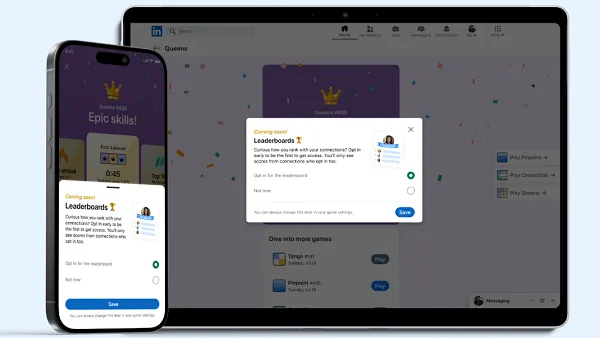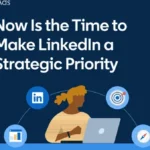Introduction: A New Way to Network on LinkedIn
LinkedIn is taking gamification to the next level with its connection-based leaderboards for in-app games. This latest feature merges professional networking with lighthearted competition, giving members new reasons to engage daily. By combining gaming with career-oriented connections, LinkedIn aims to deepen user interaction while creating a fun, competitive atmosphere.
What Are LinkedIn Games Leaderboards?
LinkedIn’s new leaderboards allow players to compete directly with their first-degree connections. Instead of measuring scores against the global user base, participants can track their performance relative to their network.
This approach offers a more personalized competitive experience, as professionals can see how they stack up against colleagues, clients, or industry peers. It also makes winning feel more rewarding—especially when victories are shared with close contacts.
How the Feature Works
The leaderboards are designed to integrate seamlessly into LinkedIn’s Word Play, Queens, and Crossclimb games. When a user plays, their scores are automatically added to a leaderboard populated by people in their LinkedIn network.
Some key elements include:
- Daily and weekly rankings to encourage repeat play
- Score visibility only among connections, keeping the experience private yet competitive
- Easy sharing options to post results directly to your LinkedIn feed
These mechanics foster ongoing engagement, as players often return to reclaim top spots or improve their personal bests.
Why LinkedIn Is Adding Games Leaderboards
LinkedIn’s decision to expand its gaming features is part of a larger user retention strategy. While gaming might seem unusual for a professional platform, it aligns with the broader trend of blurring work and play in digital spaces.
- Increasing daily visits: Games encourage users to log in frequently, keeping LinkedIn top-of-mind.
- Strengthening professional relationships: Competing in games creates natural talking points and opportunities for conversation.
- Boosting content sharing: Leaderboard updates can easily be posted, generating organic feed activity.
By adding connection-based leaderboards, LinkedIn is encouraging users to interact with their existing networks more often—beyond the typical job searches, article sharing, or recruitment activities.
The Networking Benefits of Gamification
Gamification on professional platforms offers unique value:
- Breaking the ice: Games make it easier to start conversations with new or less active connections.
- Strengthening bonds: Friendly rivalry fosters familiarity and rapport.
- Encouraging collaboration: Teams can organize casual tournaments, adding fun to virtual workspaces.
For LinkedIn, this isn’t just about entertainment—it’s about sustained professional engagement.
Potential Marketing Opportunities
While the leaderboards are primarily designed for individual use, brands and recruiters could leverage the feature creatively:
- Employer branding: Hosting leaderboard challenges for company employees to showcase workplace culture
- Recruitment marketing: Engaging potential candidates in fun competitions as part of hiring campaigns
- Community building: Industry groups could run informal tournaments to keep members active and engaged
Early User Reactions
Initial feedback from LinkedIn members shows a mix of enthusiasm and curiosity. Many appreciate the chance to interact with connections in a non-formal way, while others see it as a refreshing addition to the platform’s typically serious tone.
Some professionals have even suggested adding badges or rewards for top leaderboard positions, potentially increasing motivation and long-term participation.
What This Means for LinkedIn’s Future
The introduction of LinkedIn games leaderboards could mark the beginning of a more socially dynamic LinkedIn experience. If successful, it might inspire the company to:
- Add more interactive game formats
- Introduce seasonal competitions or themed challenges
- Experiment with virtual rewards and profile achievements
By turning casual gameplay into an extension of networking, LinkedIn may redefine how professionals connect online.
Conclusion
LinkedIn’s connection-based leaderboards are a clever way to blend professional networking with lighthearted competition. They encourage more frequent engagement, deeper connections, and creative brand interactions—all without straying too far from LinkedIn’s core mission.
In a digital age where professionals seek both meaningful connections and enjoyable online experiences, LinkedIn games leaderboards could be the perfect bridge between work and play.




